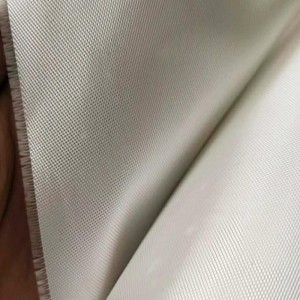lawon serat kaca kelas éléktronik pikeun industri éléktronika
Prosésna biasana ngagunakeun keusik quartz, kapur, pyrophyllite sarta mineral lianna salaku bahan baku, kalawan soda lebu, asam boric jeung bahan baku kimiawi séjén ngahiji kana kaca, lajeng ditarik kana bahan serat dina kaayaan molten.Ratusan atawa malah rébuan monofilamén bisa ngabentuk kebat serat fiberglass, nu bisa twisted na threaded sangkan benang fiberglass, nu bisa salajengna anyaman kana lawon fiberglass.lawon éléktronik, salaku bahan dasar plat tambaga-clad, loba dipaké dina telepon pinter, éléktronika konsumén, server, éléktronika otomotif, pertahanan nasional, aerospace jeung produk éléktronik tinggi-tech lianna.Dina taun-taun ayeuna, skala penjualan global lawon éléktronik parantos nunjukkeun pertumbuhan anu stabil.
Nurutkeun kana ketebalan béda lawon éléktronik, éta bisa dibagi jadi opat jenis: lawon éléktronik kandel, lawon éléktronik ipis, lawon éléktronik ultra-ipis jeung lawon éléktronik pisan ipis.lawon éléktronik tina ketebalan béda milik sasmita béda, diantara nu, lawon kandel milik lawon éléktronik low-tungtung, lawon ipis milik lawon éléktronik pertengahan tungtung, sarta lawon ultra-ipis jeung lawon ultra-ipis milik lawon éléktronik high-end. .Numutkeun standar klasifikasi nasional, aya 15 rupa lawon éléktronik dipaké umum, diantara nu ketebalan tina lawon éléktronik thinnest nyaeta 12μm, sarta ketebalan tina lawon éléktronik thickest nyaeta 254μm.Dina hadir, lawon éléktronik ultra-ipis jeung ultra-ipis utamana dipaké dina high-end telepon pinter, dewan pamawa IC jeung widang lianna.Kusabab sarat téknis anu luhur, ngan ukur sababaraha pabrik sapertos Jepang NTB (Nitto Textile) di dunya gaduh kapasitas produksi anu saluyu, sareng domestik Chongqing International sareng Guangyuan Xincai ogé tiasa ngawujudkeun produksi 106 lawon ultra-ipis.Kain éléktronik tungtung tengah utamana dipaké pikeun telepon pinter umum, server jeung bahan éléktronik otomotif, Cina batu gede, serat kaca Taishan, Chongqing International bisa ngawujudkeun produksi spésifikasi béda tina lawon ipis atawa benang saluyu;7628 lawon kandel utamana dipaké pikeun komputer desktop, printer, TV LCD, audio jeung produk éléktronik low-tungtung séjén PCB.
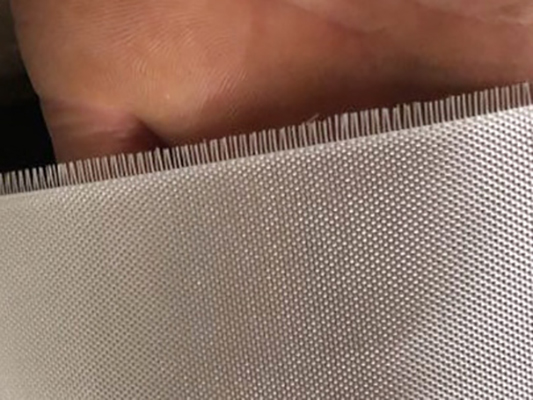
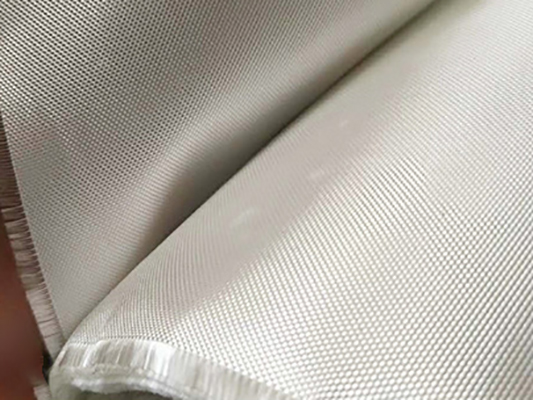
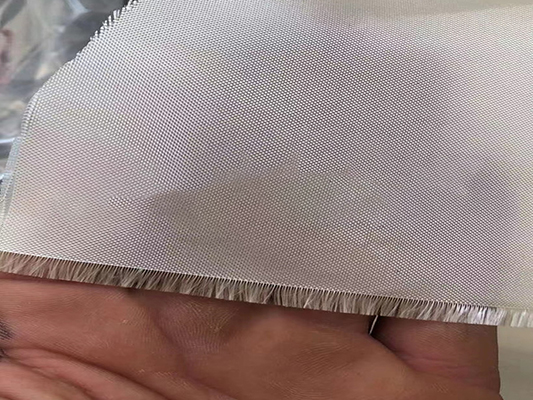
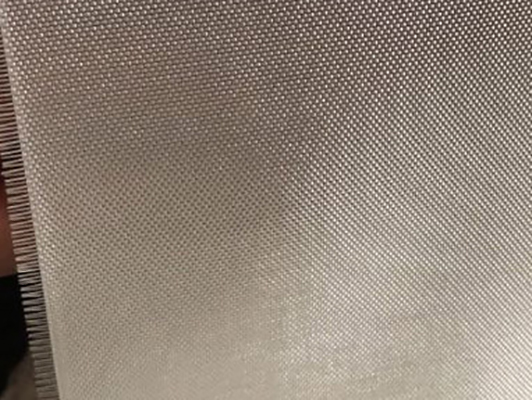
Industri langsung hulu industri lawon éléktronik nyaéta benang éléktronik.Prosés tékstil benang éléktronik sami sareng katun.Saatos perusahaan ngahasilkeun atanapi ngagaleuh benang éléktronik, benang weft sareng benang lungsin dialihkeun ku jet loom pikeun ngabentuk lawon kalayan staggered luhur sareng ka handap, sareng masing-masing naék sareng turun kedah janten struktur polos.Dina taun-taun ayeuna, kapasitas produksi domestik benang éléktronik parantos ningkat.Ayeuna, kapasitas produksi benang éléktronik Cina parantos ngahontal langkung ti 70% tina kapasitas produksi global.Nepi ka tungtun taun 2020, total kapasitas produksi benang éléktronik Cina urang téh 804.000 ton, sarta kapasitas produksina ngeunaan 746.000 ton.
Kusabab komposisi kimia sareng struktur fisik benang éléktronik nangtukeun sipat diéléktrik, résistansi panas, pamrosésan pangeboran sareng kelancaran permukaan plat tambaga, tingkat beungkeutan antara produsén sareng konsumén luhur, halangan merek atra.Salaku tambahan, inténsitas investasi aset tetep tina benang éléktronik anu saé pisan.Investasi garis produksi awal rata-rata industri sakitar 350 juta yuan / ton.Kusabab bangbarung pasar tinggi industri benang éléktronik, kapasitas produksi domestik rélatif kentel, diantara nu Asia Kidul kudu Cheng, Kingboard Kimia teh dua panggedena usaha produksi benang éléktronik domestik, industri CR3 ngahontal 49,3%.Dina widang lawon éléktronik sedeng jeung low-tungtung, alatan bangbarung teknis low, rélatif leuwih pabrik jeung kompetisi sengit, manufaktur lawon éléktronik tinggi-tungtung merlukeun téhnologi husus jeung bahan husus, jadi kompetisi antara pabrik kirang.Ayeuna, pabrik serat kaca éléktronik utama di Cina geus dimimitian dumasar kana kaunggulan kapasitas produksi jeung pangalaman lawon éléktronik, sarta terus innovate téhnologi, néangan nyadiakeun high-end benang éléktronik bebas.
Tambaga coated plat mangrupakeun jenis bahan plat-kawas dijieunna tina lawon serat gelas éléktronik salaku bahan tulangan, impregnated kalawan résin jeung ditutupan ku foil tambaga dina hiji atawa dua sisi ku panas mencét.Éta ngagaduhan tilu fungsi ngalaksanakeun, insulasi sareng ngadukung papan sirkuit anu dicitak, sareng mangrupikeun bahan inti pikeun ngadamel papan sirkuit dicitak.Nagara urang mangrupakeun nagara badag munggaran di dunya produksi plat cladding tambaga.Ukuran pasar lawon éléktronik raket patalina jeung pasar hilir langsung tina plat tambaga cladding, sarta paménta plat tambaga cladding raket patalina jeung pasar hilir tina papan circuit dicitak.Dina 2019, volume jualan taunan industri plat clad tambaga ngaleuwihan 700 juta méter pasagi.Taun 2020, pabrik domestik sapertos Shengyi Technology, Jin 'an Guoji, Nanya New Material sareng Huacheng New Material ogé ngawangun jalur produksi énggal kalayan kaluaran taunan sajuta sareng sapuluh juta méter pasagi pelat clad tambaga.Dina mangsa nu bakal datang, kalawan ngembangkeun circuit board dicitak hilir jeung industri informasi éléktronik, industri clad tambaga bakal terus tumuwuh, nu bakal mawa paménta pasar anyar hébat kana industri lawon éléktronik.
Dina taun-taun ayeuna, proporsi komunikasi ningkat laun (33%), sedengkeun komputer turun (28,6%).éléktronika konsumén jeung éléktronika otomotif ngaronjat steadily.Kalayan tumuwuhna ngabeledug tina telepon pinter jeung alat wearable diwanohkeun ku pamutahiran konsumsi, éléktronika konsumén calakan laun ngembang nuju miniaturization, thinness, kecerdasan sarta portability, nu ngajadikeun papan sirkuit dicitak, salaku pamawa sirkuit, perlu minuhan paménta pikeun tinggi- dénsitas interkonéksi.Dina mangsa nu bakal datang, variétas tina high-end ultra-ipis jeung ultra-ipis lawon éléktronik bakal terus ningkat.Jero sareng lebar widang aplikasi bakal terus dilegakeun.



